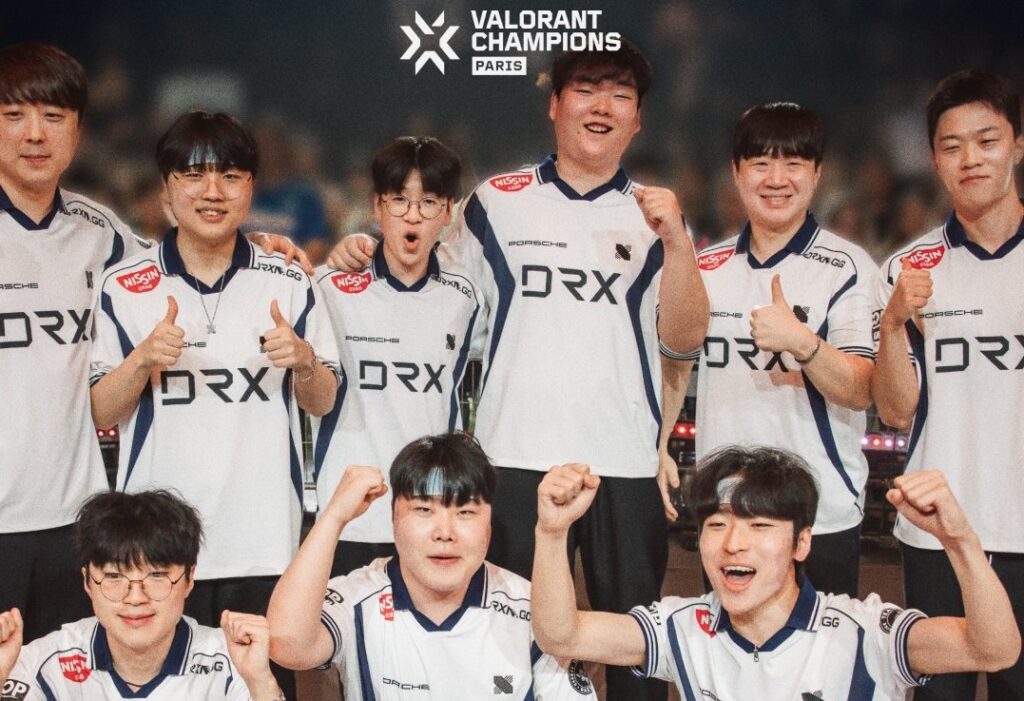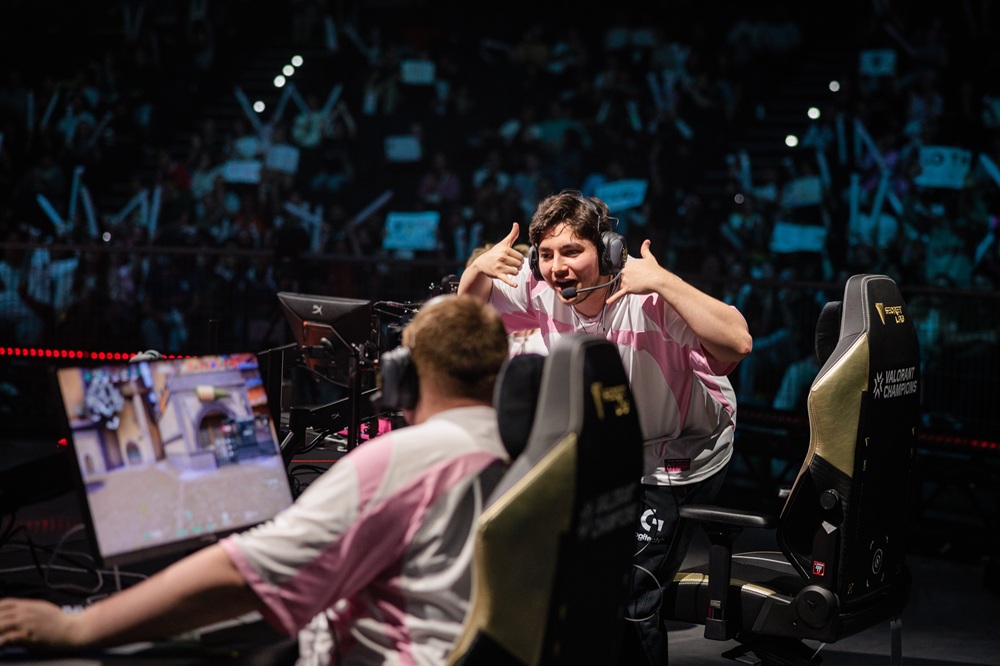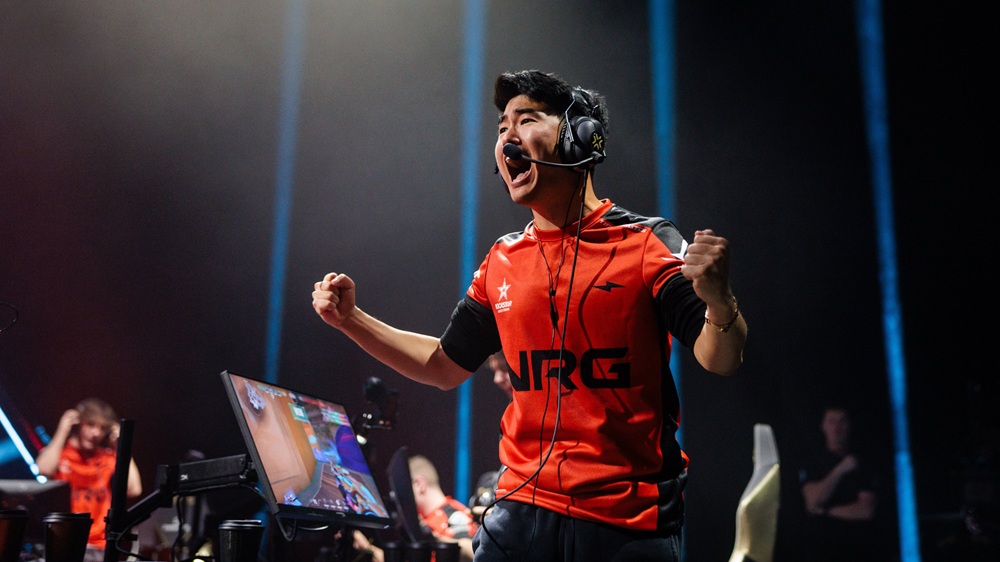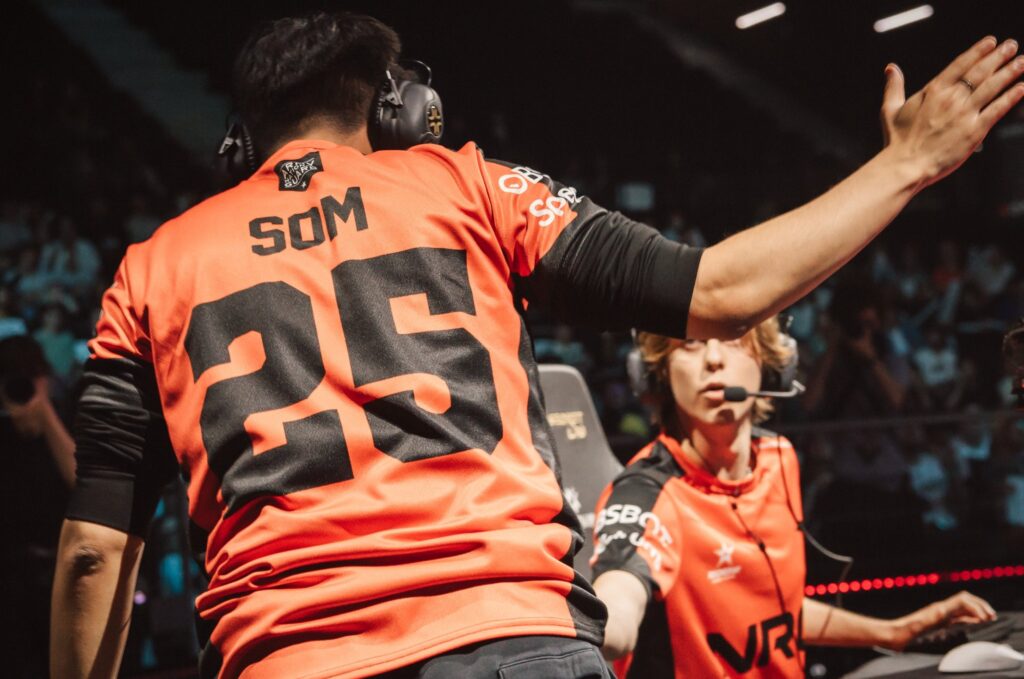Team Heretics Qualify for VALORANT Champions Paris After Team Liquid Win VCT EMEA Stage 2
Team Heretics fans celebrated a tense qualification for VALORANT Champions Paris after Team Liquid’s title-winning VCT EMEA Stage 2 success.
Those of a Heretics persuasion were stunned after their team was knocked down to the Stage 2 lower bracket by BBL Esports and subsequently eliminated by NAVI without picking up a map.
There was plenty to play for across all VCT regions, and here’s what went down in the closing stages of European competition, as well as Pacific and Americas.

Team Liquid’s IGL, nAts, celebrates the win. Image Credit: Riot Games
Team Heretics Survive Huge VCT EMEA Scare
At the start of the Finals Weekend, there were two EMEA spots left at Champions Paris, with GIANTX, NAVI, Team Heretics, and BBL Esports still in the running.
For Team Heretics, the path to Paris hinged on Team Liquid making it to the grand final of VCT EMEA Stage 2.
To the immense satisfaction of Heretics fans and everyone in the organization, Team Liquid narrowly beat BBL Esports in the upper bracket final by two maps to one. Liquid took Ascent 13-10, lost Sunset 10-13, and edged BBL out in overtime on Bind to wrap up the series – and book Heretics’ seats on the plane to Paris.
In the Lower Bracket Semifinal, GIANTX put an end to NAVI’s run with a dramatic 2-1 reverse sweep before dominantly dispatching BBL Esports in the lower bracket final to make it to the grand final.
Liquid were much superior in an anti-climactic stage final, smashing GIANTX without dropping a map to take the title.
Every round, every match, every clutch, has led them here!
Congratulations @liquidvalorant 🏆 pic.twitter.com/mhRQ4WGCkS
— VALORANT Esports EMEA (@valesports_emea) August 31, 2025
With the win, Team Liquid is the top seed from VCT EMEA. GIANTX is Europe’s 2nd seed, with Fnatic and Heretics making up 3rd and 4th based on Champions Tour points.
VCT Americas and Pacific Finals Weekend Results
At VCT Americas Stage 2, the final Champions Paris spot came down to the Lower Bracket Semifinal match between Cloud9 and NRG.
Cloud9 came out swinging to win the first map (Haven 13-10) before NRG made a magnificent reverse-sweep comeback, winning Corrode (13-2) and Lotus (13-10) to secure their place in the French capital.
In the VCT Americas Upper Bracket Final, G2 Esports smashed Sentinels 2-0, and NRG went on to beat Sentinels 3-1 in the Lower Bracket Final.
Later, in the Stage 2 Grand Final, it was G2 Esports who claimed top spot by swatting aside NRG 3-0. The seeds from the Americas region are as follows:
- G2 Esports (#1)
- NRG (#2)
- Sentinels (#3)
- MIBR (#4)

All teams set to compete at Champions Paris. Image Credit: Riot Games
At VCT Pacific Stage 2, Paper Rex beat TALON 2-0 to claim a spot in the grand final.
In the best-of-five lower bracket final, TALON went 2-0 up, putting themselves just one map win away from Champions Paris. However, Rex Regum Qeon (RRQ) pulled off a stunning comeback, winning the following three maps to take the series 3-2 and end TALON’s hopes.
Subsequently, Paper Rex shut down RRQ in the grand final 3-1 to win Stage 2. The final VCT Pacific seedings for Champions Paris are:
- Paper Rex (#1)
- RRQ (#2)
- T1 (#3)
- DRX (#4)
VCT China Stage 2 results and standings were confirmed a week earlier than the rest. For quick reference, the four VCT China teams competing at Champions Paris are outlined below:
- Bilibili Gaming (#1)
- Dragon Ranger (#2)
- EDward Gaming (#3)
- XLG Esports (#4)
Champions Paris is scheduled to run from September 12 to October 5, taking place in front of a live crowd in France, first at Les Arènes for the Group Stage and most of the Playoffs Stage, and concluding with the top four at the Accor Arena.
With the top four teams from each region in attendance, and a prize pool of $2,225,000 to fight for, the stakes couldn’t be higher.














